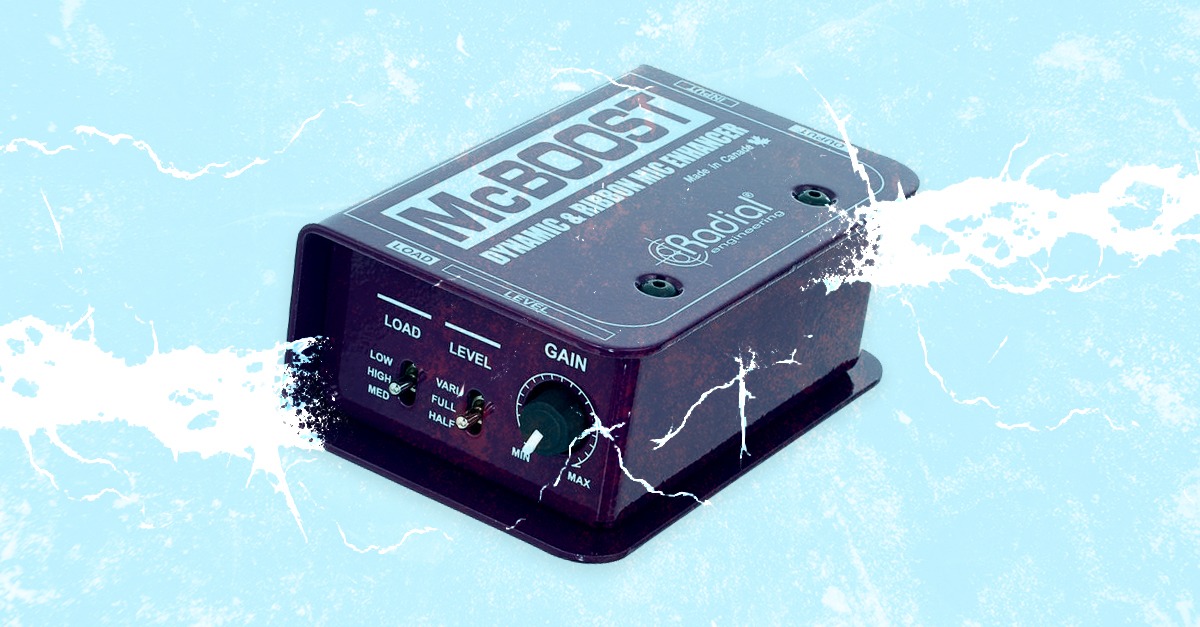What Is Phantom Power and Why Do You Need It?

Phantom power is required for some microphones to work. It’s a feature you’ll find on many mic preamps, mixers and audio interfaces.
But what is it exactly and why is it necessary? Which mics need it and how do you supply it?
In this article I’ll explain everything you need to know about phantom power.
Let’s get started.
What is phantom power?
Phantom power is electricity used to power active electronics in microphones or other gear with XLR connectivity.
It’s typically supplied from the preamp, mixer channel or audio interface that you connect to the mic.
Phantom is required for condenser mics as well as some studio utility gear like active DIs and inline preamps.
Why do you need phantom power?
Phantom power is most commonly used with condenser mics because they use electrical circuitry to convert vibrations in the air into audio signals.
In the past, this microphone type used bulky external power supplies to supply current to the electronics.
Phantom power is electricity used to power active electronics in microphones or other gear with XLR connectivity.
But when FET transistors replaced vacuum tubes in audio gear, microphones no longer needed high voltage power to run.
Instead, engineers realized the electricity could come from the console itself using a clever design.
They called it phantom power because the mics were able to work with no power supply visible—it must have seemed spooky at the time!
Now wherever you see a +48 option on your gear, you can easily supply the 48 volts of electricity needed to power condenser mics.
When should you avoid phantom power?
While some microphones need phantom power to work, it can be damaging if supplied to certain mic types. The main mic style this affects is ribbon mics.
Ribbon microphones are some of the oldest sound capture technology around. They rely on a thin, fragile metal ribbon that moves back and forth with the sound waves.
Ribbon mics were invented long before phantom power and can be vulnerable to surges of electricity.
Ribbon mics were invented long before phantom power and can be vulnerable to surges of electricity.
If the powerful 48v electricity reaches the microphone’s ribbon, it can cause severe damage and even tear the ribbon.
Modern ribbon microphones are less sensitive to this issue, but the best advice is to avoid sending them 48v phantom power at all times.
Hot tip: The same rule applies for any microphone that doesn’t have a transformer coupled output. This isn’t common, but some vintage mics and certain DIY mods for dynamic mics can also be damaged by phantom power.
What else needs phantom power?
Phantom power is traditionally used to power active microphones, but creative manufacturers have found innovative uses for it in other gear.
For example, some popular large diaphragm dynamic mics like the Shure SM7B require more gain than many audio interface preamps can supply without introducing noise.
To fix it you can use an inline preamp or mic activator box to add gain and clarity. These small boxes go between your mic and audio interface. They’re powered by 48v phantom power.
They help bring the signal up so it’s strong enough to sound clean and clear even when the preamp has limited gain on tap.
Here are some of the best mic activators and inline preamps out there right now:
Another type of gear that requires phantom power is active DI boxes.
A DI is a pro audio tool that lets you plug instrument level equipment like guitars or keyboards directly into a mic preamp.
Some DIs are completely passive and don’t require any electricity to work. Others use active circuitry to help condition the signal.
Active DIs are often powered with the 48v phantom power supplied by the mixer.
How do you send phantom power?
To use phantom power with your condenser mics, all you have to do is engage the +48 or 48V button on your audio interface, mixer channel or preamp.
To use phantom power with your condenser mics, all you have to do is engage the +48 or 48V button on your audio interface, mixer channel or preamp.
With some interfaces, these options will be found in the software control panel app if there’s no button on the device itself.
Most preamps and interfaces give you the option to engage phantom power per channel, but some small mixers have global phantom power.
In that case, engaging phantom power means you’ll be sending 48v on all channels, so you’ll have to watch out for sensitive gear.
If for some reason your preamp does not include phantom power you can still send it using an external supply.
Here are some options for external phantom power supplies:
Proper power supply
Phantom power is something you’ll need to understand to get the most out of your gear.
From condenser mics to active DIs and cloudlifters, there’s plenty of essential equipment that needs it to work.
If you’ve made it through this article you’ll have a great start for working with phantom power.
Gear guides, tips, tutorials, inspiration and more—delivered weekly.
Keep up with the LANDR Blog.
Latest posts
